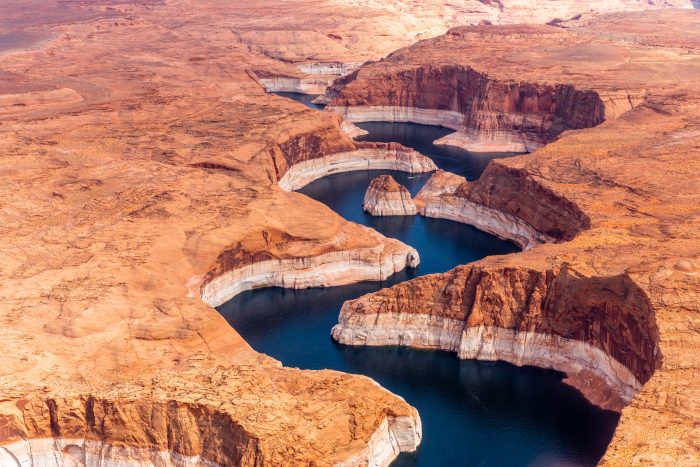Sopris Sun correspondent Olivia Emmer interviewed KUNC’s Water and Environment Reporter covering the Colorado River basin, Alex Hager, about the Bureau of Reclamation’s recent demand to users of Colorado River water. The interview has been edited for length and clarity.

Would you remind us what happened at the beginning of this summer?
The federal government came to the seven states that use water in the Colorado River basin and said, you have 60 days to conserve 2 to 4 million acre feet (maf) of water. You have two months to figure it out and if you don’t, we will do it for you. That really sent shockwaves around the basin because it was an unprecedented amount of water and because no one was even sure if the federal government had the legal authority to intervene in this way.
On the Aug. 16 deadline, the Department of the Interior held a press conference. What did they say?
Two different things happened on Tuesday. States failed to meet the request for serious water conservation and the federal government issued already agreed upon cutbacks. The cuts were not very drastic — they were spelled out in a 2019 agreement that all the states signed on to and are triggered by certain water levels in Lake Mead. Forecasts had been showing that water levels in Lake Mead were heading in that direction so it didn’t really come as a shock. The cuts are only going to impact Arizona, Nevada and the country of Mexico. So that still leaves the majority of the basin unchanged.
You mentioned that the states failed to come to an agreement about major cuts. Can you tell us more about that?
A lot of [discussion] was happening behind closed doors. The biggest thing that we saw was that the states in the Upper Basin, particularly Colorado, quickly said, “it’s not our job to take the hit. We think that the Lower Basin should be the ones to be more proactive here.” The Upper Basin includes Colorado, Utah, Wyoming and New Mexico. The Lower Basin is Nevada, California and Arizona.
The Upper Basin has a legal obligation to send a very specific amount of water down to its Lower Basin neighbors every year. However, the Upper Basin gets its water from Mother Nature. So the Upper Basin contends that they have to take shortages when Mother Nature delivers them less water every year — they are at the whims of the snow. Meanwhile, they say, the Lower Basin has the luxury of depending on a consistent amount of water and being able to plan around that.
What has been the reaction to the federal government’s relatively soft response to the states’ failure to come up with the plan in time?
There was a pretty interesting letter from John Entsminger, general manager of the Southern Nevada Water Authority. Entsminger wrote, “through collective inaction, every water user in the Colorado River is complicit in allowing the situation to reach this point.” There’s still a chance that the states could come out with a plan. Or, there’s a chance that the federal government could try to intervene and toe a risky legal line. No action could mean loss of hydropower to 5 million people and the potential to not be able to deliver enough water from Lake Powell to users downstream.
A lot of people in Colorado rely on water from the Colorado River. Could their water use be affected near-term?
In Colorado that’s not likely to happen anytime soon. It would have to be pretty drastic before it got to that point. The cuts that were made this week were principally made to the Central Arizona Project, which carries water from the Colorado River to farms and cities in central Arizona and tribes. The diversions in Colorado that keep the taps on the Front Range flowing are not under any threat in the near future.
What’s next?
We’re going to have to keep figuring out how to divvy up a steadily shrinking resource. There is no amount of snow we could get in one year to turn this around. We would need epic snow years back to back to back to back to back to really change the supply issue. So this is a question of demand. Agriculture uses between 70 and 80 percent of the water in the Basin. If we have to find a ton of water, some of it is going to come from the largest user.
Realistically what that looks like is state and federal money going to pay farmers and ranchers to just use less, to grow less. If it’s done at a large enough scale, you could see agriculture leaving some areas where it’s been for a long time and we could see the price of food change.
Tags: #Alex Hager#Colorado River#conservation#Ecoflight #water